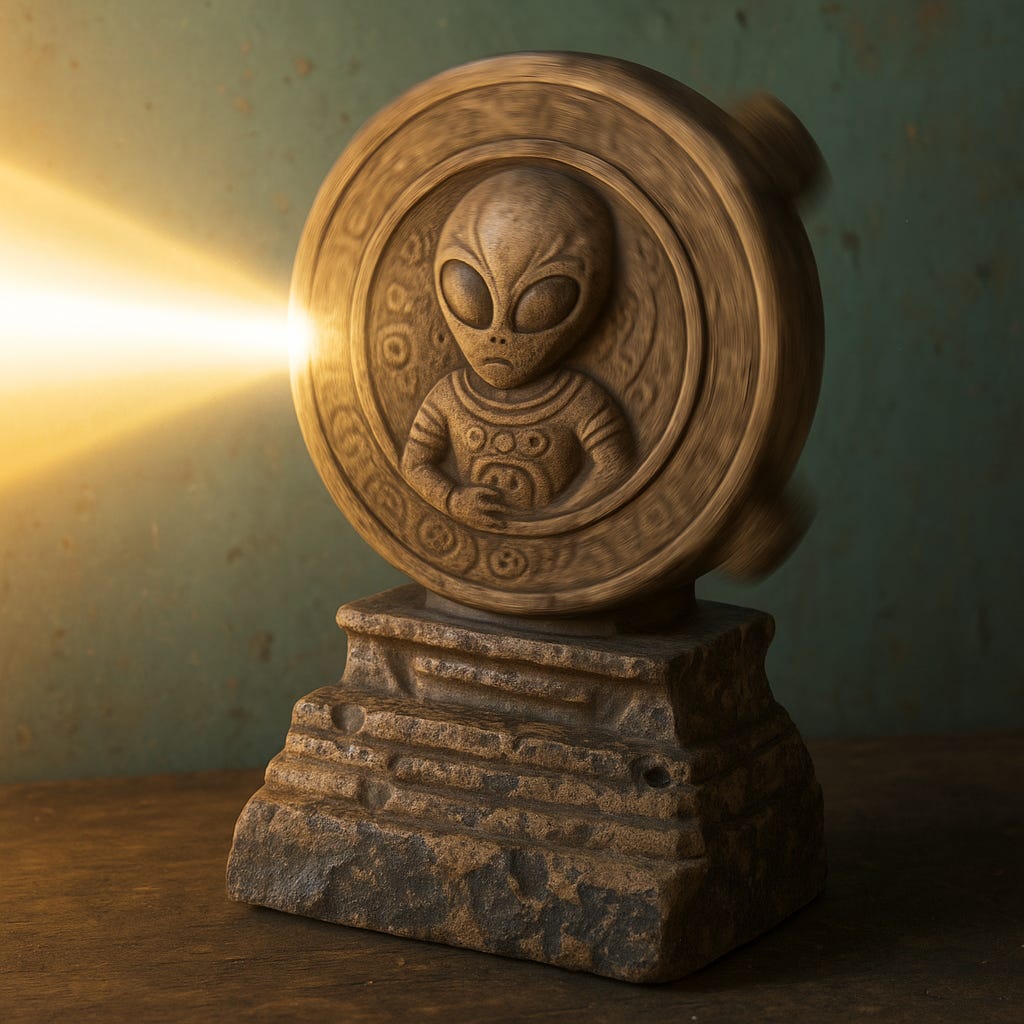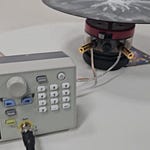TL;DR
The artifact shown from Tula that “spins when light shines on it” can be understood in Frequency Wave Theory (FWT) as a resonant frequency device — not just a carved relic. Light (electromagnetic energy) excites hidden frequency patterns within its crystalline and metallic inclusions, creating torque through resonance. This is the same principle behind modern photonic propulsion, acoustic levitation, and even plasma orb navigation: light → frequency coupling → motion.
Frequency Wave Theory Perspective
Light as a Frequency Trigger
Light is not just illumination — it is oscillating electromagnetic frequency. When it hits a carved stone or crystal matrix with the right geometry, it can induce standing waves inside the material. Think of it like a Chladni plate: when sound vibrates a plate, patterns emerge; when light vibrates a resonant structure, motion emerges.Carved Geometry as Resonant Cavity
The artifact’s circular designs, embedded glyphs, and grooves act as frequency waveguides. They aren’t decoration — they channel energy into rotational modes. Just as spiral galaxies spin from density waves, or cymatic patterns self-organize, the artifact is a miniature frequency engine.Why It Spins with Light
FWT explains that Frequency Momentum (FM = ½ ρ ω A²) is conserved across scales. When photons strike the artifact, they transfer frequency momentum into the carved pattern. If the geometry is asymmetric, it translates into torque — visible as spinning. This is analogous to solar sails in space, or optical tweezers in quantum labs.Link to Ancient Technology
Tula (Toltec capital) is famous for the Atlantean statues and relics aligned with the Sun. If these artifacts were designed as frequency machines, they may have been part of an energy grid. Light, sound, and magnetism would interact with these stones to create motion, charge, or resonance — the same principles behind rumored “alien technology.”Possible Modern Analogs
Photonic crystals: guide light into specific modes.
Optical levitation: lasers move particles in air.
Spintronics: light induces electron spin currents.
The Tula artifact seems to use the same principles — but encoded in stone.
Simple Analogy
Imagine a child’s pinwheel. It spins when wind hits it because its blades are angled just right. Now replace the wind with light and sound, and replace the pinwheel with stone carved into resonant frequency pathways. That’s what this artifact may be — a frequency pinwheel built thousands of years ago.










